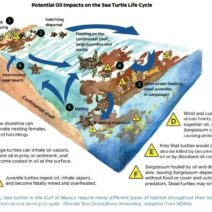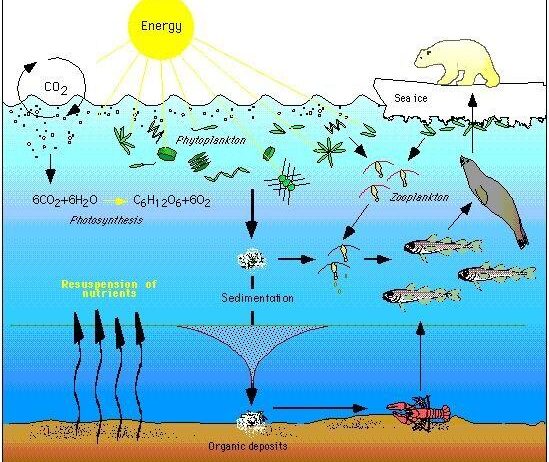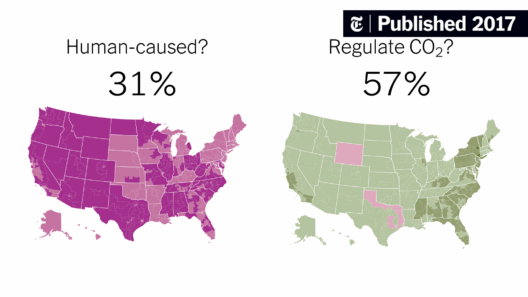The Arctic, often referred to as the Earth’s “refrigerator,” plays a pivotal role in the regulation of global climate. As temperatures continue to rise, this icy bastion of biodiversity faces unparalleled threats. The metamorphosis of this pristine landscape into a more hostile environment not only jeopardizes its unique ecosystems but catalyzes a chain reaction impacting climate systems worldwide. Preventing global warming in the Arctic is not merely an environmental imperative; it is a global responsibility. Herein lies a comprehensive discourse on protecting this fragile region.
Understanding the Arctic: A Tapestry of Life
To appreciate the gravity of the situation, one must first grasp the intricacies of Arctic ecosystems. This region is a complex tapestry woven from the threads of marine and terrestrial life, both of which are uniquely adapted to the extreme conditions. From the resilient polar bear prowling the ice to the delicate phytoplankton teeming in frigid waters, each organism plays a critical role in its ecological narrative. The Arctic is not an isolated environment; rather, it serves as a barometer for climate health. When polar ice diminishes, it unravels the fabric of the ecosystem, affecting ocean currents, weather patterns, and atmospheric composition globally.
Greenhouse Gas Emissions: The Unseen Enemy
Central to the discourse on global warming is the phenomenon of greenhouse gas emissions. The Arctic region is particularly sensitive to these emissions, which stem primarily from human activities such as fossil fuel combustion, deforestation, and industrial agriculture. These gases trap heat in the Earth’s atmosphere, contributing to rising temperatures. To safeguard the Arctic’s delicate ecosystems, a multifaceted approach to reducing emissions is crucial.
Transitioning towards renewable energy sources, such as solar, wind, and geothermal, is paramount. By harnessing the abundant natural resources available, we can diminish our reliance on fossil fuels. This transformative shift requires not only technological advancements but also societal adaptation, promoting energy efficiency and responsible consumption.
Conservation: A Shield for Biodiversity
The establishment of protected areas, akin to sanctuaries for endangered species, offers vital refuge for the flora and fauna of the Arctic. These conserved spaces are essential in mitigating habitat destruction while allowing ecosystems to recover. Creating marine protected areas (MPAs) can safeguard vital marine biodiversity while fostering resilience in the face of climate change challenges. This strategic initiative requires regional cooperation among Arctic nations, reinforcing international frameworks aimed at ecological preservation.
Local Communities: Guardians of the Environment
Indigenous communities residing in the Arctic embody a deep-rooted connection to their environment. Their traditional knowledge and practices exemplify sustainable living. Engaging these populations in climate adaptation strategies ensures that their insights guide conservation efforts. By intertwining scientific research with indigenous wisdom, we can cultivate a more holistic understanding of ecosystem dynamics.
Furthermore, empowering local communities through education and resources to combat climate change can yield transformative results. When communities are equipped to advocate for their environment, they can serve as stewards of the Arctic, implementing local initiatives that resonate with cultural practices while addressing broader climate goals.
Climate Policy: Crafting a Vision for the Future
Effective climate policy is indispensable in the fight against global warming in the Arctic. International agreements, such as the Paris Agreement, must be bolstered by robust commitments from participating nations. Accountability mechanisms are critical; nations must adhere to emissions reduction targets and transparently report progress.
Climate diplomacy efforts should prioritize Arctic-specific issues, emphasizing collaboration among Arctic states and stakeholders. Cross-border initiatives can amplify the impact of local solutions, uniting diverse perspectives in a collective fight against climate change. The creation of an Arctic Council dedicated to addressing climate change could further consolidate efforts toward sustainable management of this vital region.
Innovative Solutions: Technology in Service of Nature
Innovation is a beacon of hope in addressing climate change. Emerging technologies offer novel approaches to mitigate the effects of global warming. Carbon capture and storage (CCS) is one such innovation, allowing us to trap carbon dioxide emissions and store them safely underground. Advancements in agricultural practices, including regenerative farming and permaculture, can also reduce the carbon footprint while enhancing biodiversity.
Moreover, investing in research to develop climate-resilient species can bolster the adaptability of Arctic organisms. Biotechnology can pave the way for understanding genetic resilience, ensuring the survival of sensitive species amidst shifting climatic conditions. These innovative practices represent a fusion of science and stewardship, engraving sustainability into the very blueprint of our ecosystems.
Public Awareness: A Collective Journey
Education and outreach play an instrumental role in galvanizing public support for climate action. Raising awareness about the Arctic’s plight fosters a sense of shared responsibility among individuals and communities worldwide. This is not merely an environmental issue; it intersects with social justice, economic stability, and global health. By intertwining narratives of personal impact and communal resilience, we can inspire collective action towards preserving our planet’s icy frontiers.
Social media campaigns, documentary films, and grassroots movements can amplify awareness and stimulate dialogue, inviting diverse voices into the conversation about climate change. Through these platforms, we can cultivate a global citizenry motivated to act, communicate, and advocate for a sustainable future.
An Integrated Path Forward
As we traverse the challenges posed by global warming in the Arctic, a multifaceted approach that combines policy, science, community engagement, and innovative solutions is paramount. Protecting this fragile ecosystem is a testament to our dedication not only to our planet’s health but to future generations.
In essence, the Arctic embodies both the beauty and fragility of our world. Its preservation is a mirror reflecting our commitment to a balanced and harmonious existence with nature. As stewards of the planet, it is our obligation to ensure that this magnificent region continues to thrive amidst the changing tides of climate. The choice is clear: advocate for the Arctic, safeguard its ecosystems, and take actionable steps toward a sustainable tomorrow.







